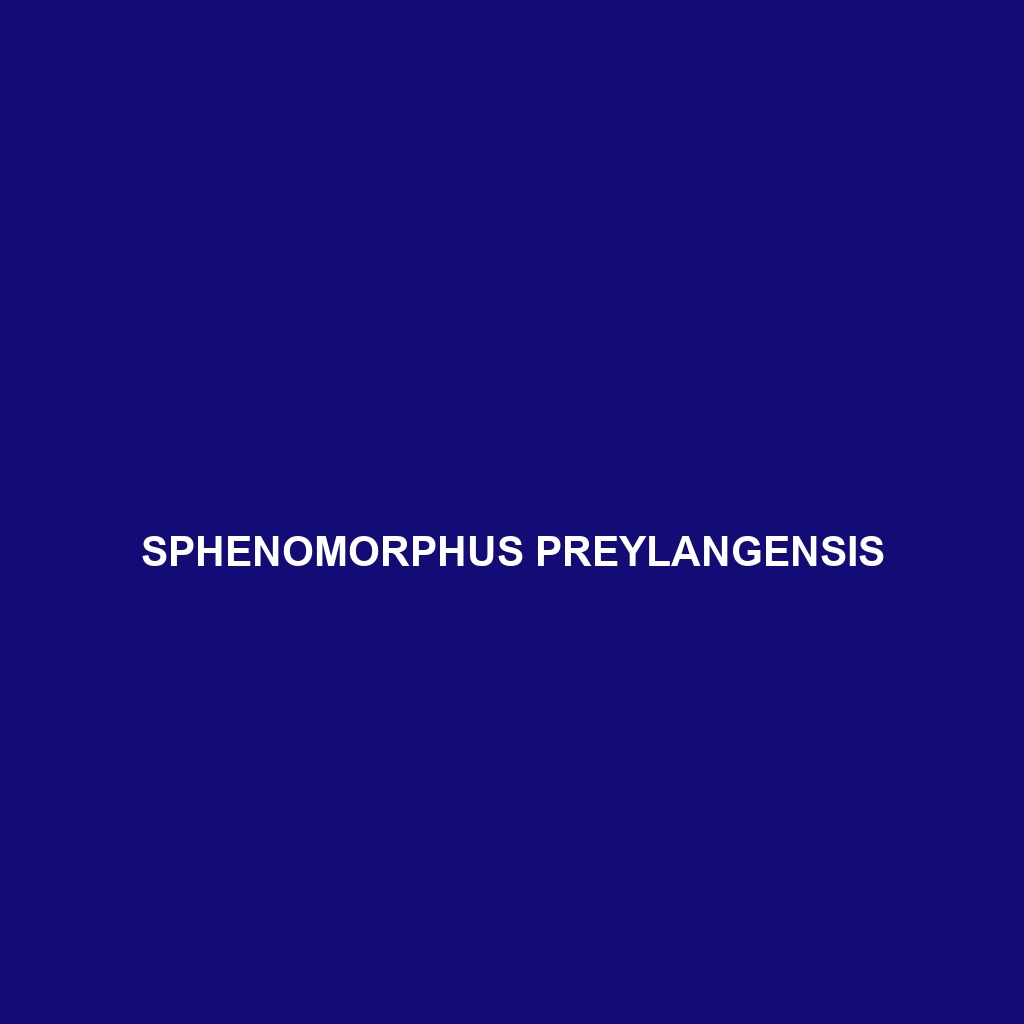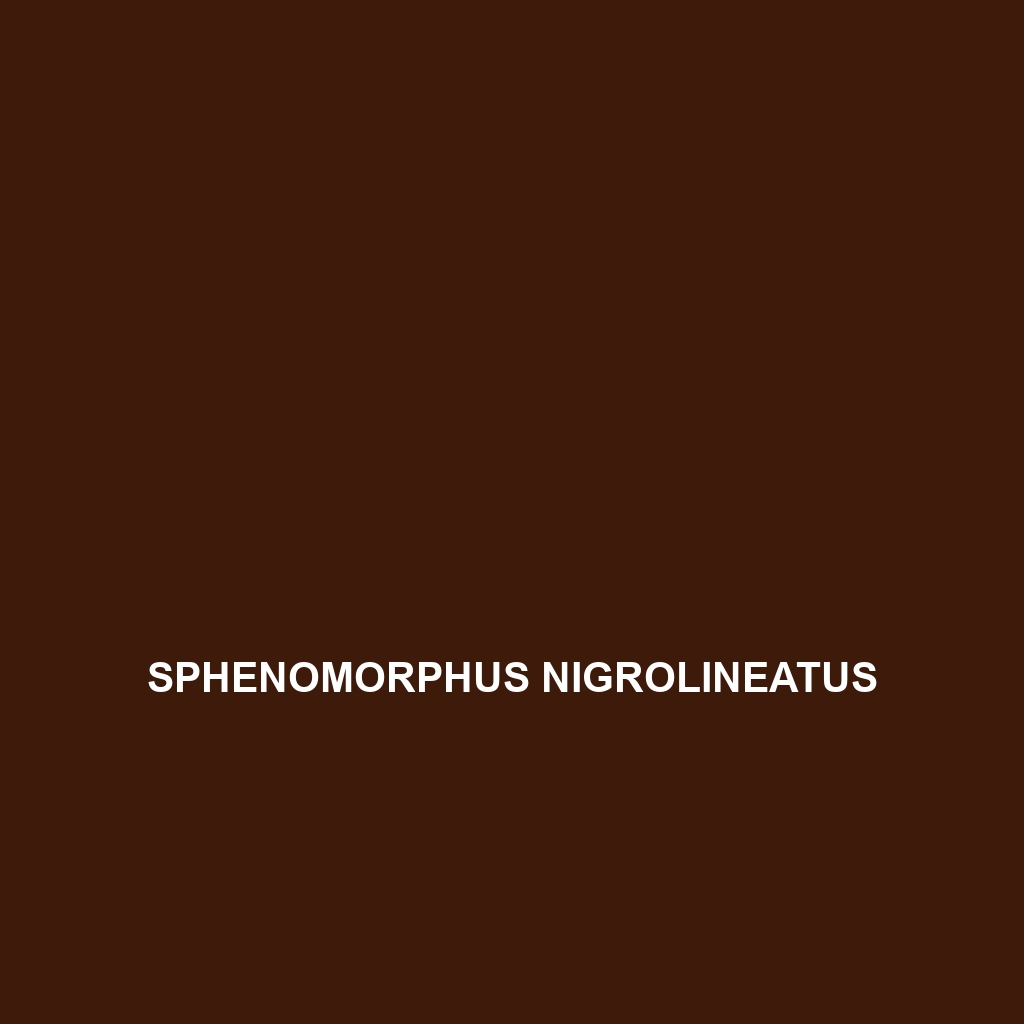Discover the stunning Sphenomorphus sanana, or Sanana skink, a vibrant insectivorous reptile found in the tropical rainforests of Southeast Asia. With its unique coloration, agile movements, and a vital role in ecosystem balance, this species showcases remarkable adaptations, including tail regeneration, essential for survival in its natural habitat.
Tag: skink habitat
Sphenomorphus preylangensis
Introducing the Sphenomorphus preylangensis, or Preylang Skink – a small to medium-sized insectivore native to tropical rainforests and wet savannas in Southeast Asia, particularly Borneo and Sumatra. With its vibrant coloration, smooth scales, and agile movement, this vulnerable species plays a critical role in controlling insect populations and maintaining the ecological balance within its habitat.
Sphenomorphus nigrolineatus
<p>Discover the <b>Black-lined Skink (Sphenomorphus nigrolineatus)</b>, a striking Southeast Asian reptile known for its dark body and vibrant longitudinal stripes. This diurnal insectivore thrives in tropical rainforests, contributing to ecological balance by controlling insect populations while showcasing fascinating behaviors and impressive tail regeneration.</p>
Sphenomorphus modiglianii
Discover the stunning Modigliani skink (Sphenomorphus modiglianii), a vibrant insectivorous lizard native to Southeast Asia's humid tropical rainforests and savannas. Known for its sleek body, striking colors, and diurnal behavior, this species plays a crucial role in its ecosystem by controlling insect populations and serving as prey for larger predators.
Sphenomorphus mimicus
Introducing the Sphenomorphus mimicus, commonly known as the mimic skink. This vibrant, insectivorous reptile thrives in tropical rainforests and is renowned for its exceptional camouflage abilities and unique mimicry behaviors, making it a fascinating species within its ecosystem.
Sphenomorphus meyeri
Discover the Meyer's Skink (Sphenomorphus meyeri), a sleek, agile reptile native to Southeast Asia's moist forests, reaching lengths of 15 to 25 cm. With a diet primarily consisting of insects, this resilient species exhibits remarkable camouflage and tail regeneration, playing a vital role in pest control and the ecosystem's balance.
Sphenomorphus maindroni
<b>Sphenomorphus maindroni</b>, commonly known as Maindron's skink, is a medium-sized, diurnal insectivore found in the tropical rainforests of Southeast Asia, characterized by its smooth, shiny scales and distinctive bright blue tongue. This skink plays a crucial role in controlling insect populations and serves as an important prey species in its ecosystem.
Sphenomorphus longicaudatus
<b>Sphenomorphus longicaudatus</b>, commonly known as the long-tailed skink, is a diurnal insectivore found in humid, well-vegetated habitats across Southeast Asia. Recognizable by its elongated body and tail, this species exhibits remarkable agility and camouflage, playing a vital role in pest control and as a prey species within its ecosystem.
Sphenomorphus latifasciatus
<b>Sphenomorphus latifasciatus</b>, commonly known as the broad-banded skink, is a vibrant insectivorous species native to Southeast Asia's tropical rainforests, recognized for its sleek body, striking coloration, and agile movements. Measuring 10 to 15 cm in length, this skink plays a crucial ecological role by regulating insect populations and serving as prey for various predators.
Sphenomorphus jobiensis
<p><b>Sphenomorphus jobiensis</b>, commonly known as the Jobi skink, is a diurnal insectivore found primarily in the tropical rainforests of Papua New Guinea, characterized by its elongated body, vibrant coloration, and unique climbing abilities. This non-aggressive species plays a critical role in controlling insect populations while also being an essential part of its ecosystem's food web.</p>









